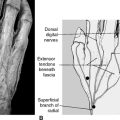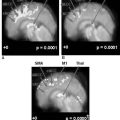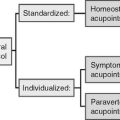CHAPTER 8 Introduction to the Practical Application of the Integrative Neuromuscular Acupoint System
This chapter reviews the most important concepts for successful acupuncture therapy.
THE FOUR PRELIMINARY CLINICAL PROCEDURES
QUANTITATIVE ACUPUNCTURE EVALUATION AND CLASSIFICATION OF PATIENTS
After examining a patient, the practitioner should be able to know:
Chapter 6 provides the technical details of how to quantitatively evaluate a patient.
INTERACTION BETWEEN THE NEURO-, IMMUNE, ENDOCRINE, AND CARDIOVASCULAR SYSTEMS
Please refer to Chapters 3 and 4 for an explanation of the peripheral and central mechanisms of acupuncture therapy.
Acupuncture Needling Normalizes Muscle Physiology
The sick muscle is painful, spasmodic, tight, swollen, inflamed, fatigued, and starved for energy; it requires more nutrition and an improved oxygen supply to recover. It also requires an increase in blood circulation to remove metabolic toxins, but the tightness of the muscle or the contracture formed in it reduces or blocks the normal blood circulation. This process is a vicious circle of energy crisis in the muscle (see Chapter 3). The sick muscle is no longer responding to the signals from the brain that try to create the necessary relaxation. If this condition persists, acute muscle pain will become chronic and result in atrophy.
The mechanical movement of the needling (pistoning and rotating, see Chapter 3) pulls, moves, and stretches all the broken fibers and leads to mechanical relaxation of the tissues around the needle. Thicker needles like those of syringes do not create this type of physical affinity between the needle surface and the broken fibers.
The mechanical needling of sensory nerve endings also stimulates the corresponding motor neurons to send signals to relax the tight muscles. We described this physiologic process in Chapter 3. Thus the needling immediately produces the effect of relaxation, both mechanically and physiologically. Once the needle is removed, the needle-induced lesion prevents the re-contraction of the broken fibers. The broken tissues, triggered by the lesion, start either reconstruction or replacement of fibers.
Once the muscle is relaxed, the blood vessels restore the normal circulation that supplies nutrition and oxygen and removes the metabolic toxins. The restored energy supply resolves the energy crisis and desensitizes the irritated nerve endings. This is how needling and its lesion activate the healing process of damaged muscle.
BASIC CONCEPTS OF THE APPLICATION OF INMAS TO CLINICAL PRACTICE
There are three steps involved in searching for effective SAs and PAs:
When applying INMAS, a practitioner uses the same protocol to treat different symptoms but with personal variation: HAs are basically the same for everyone but SAs and PAs are different for each patient, depending on the individualized nature of the symptoms. For example, the HA part of the protocol is exactly the same regardless of whether a patient’s headache is a migraine headache, a tension headache, or a whiplash-induced headache. However, the SAs are different for each patient, depending on the type of headache. As noted above, understanding the nature and mechanism of the symptoms in conjunction with the anatomy and biomechanics of the affected location will help practitioners to find and select the most effective SAs. The most effective SAs will then determine which PAs to use.






